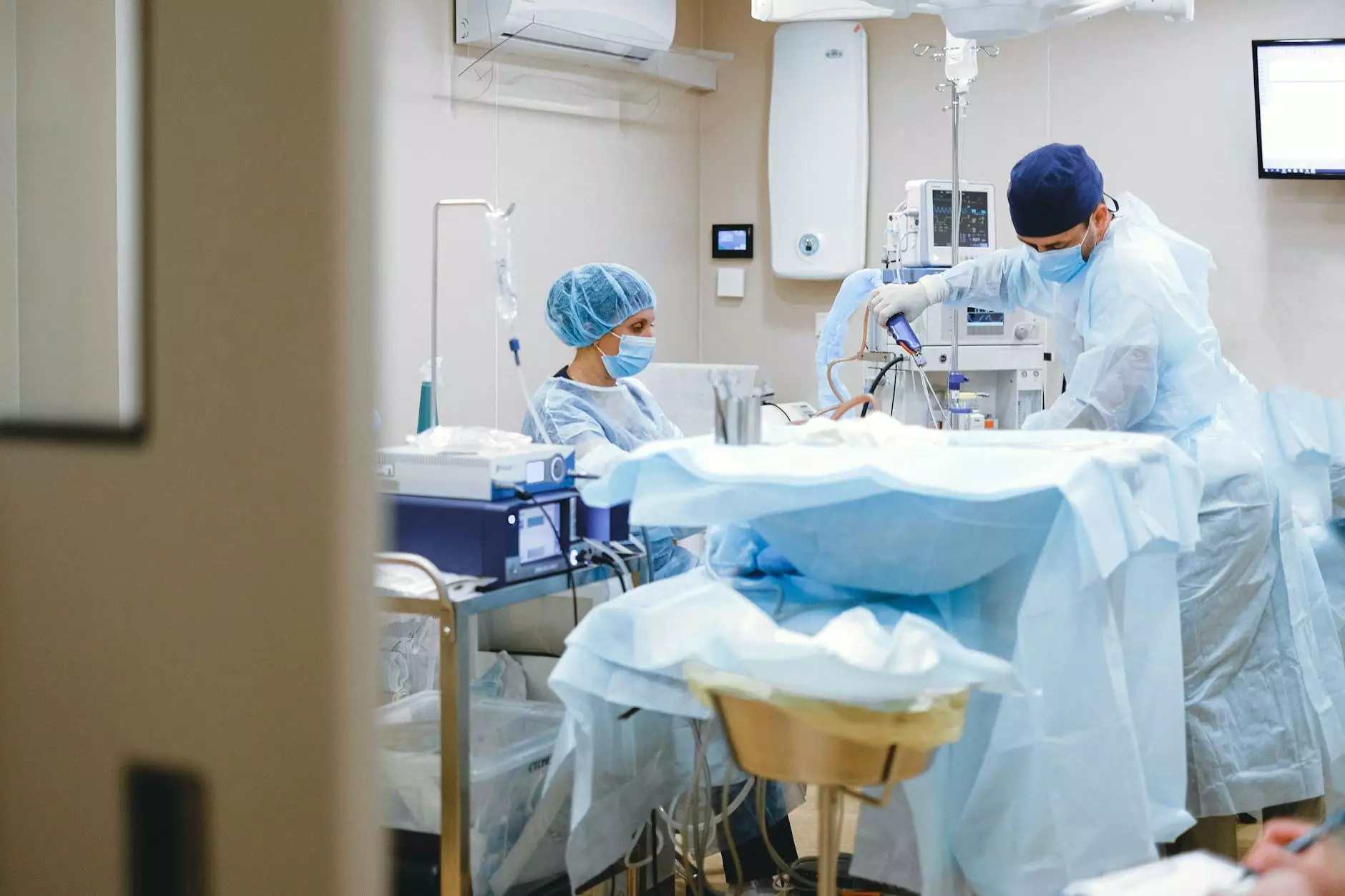CT Scan for Lung Cancer: Understanding the Diagnosis and Treatment

The fight against lung cancer requires effective diagnostic tools and treatment methodologies. One of the pivotal diagnostic tools used in modern medicine is the CT scan for lung cancer. This imaging technology has transformed the landscape of early cancer detection and management.
What is a CT Scan?
A CT scan, or computed tomography scan, is a sophisticated imaging method that combines X-ray images taken from various angles around the body and uses computer processing to create cross-sectional images (slices) of bones, blood vessels, and soft tissues inside the body. The resulting images provide much more detailed information than regular X-ray exams.
How CT Scans Work
- Patient Preparation: Before undergoing a CT scan, patients are usually advised to remove any metal objects, such as jewelry or belts, that could interfere with the imaging.
- Contrast Material: In many cases, a contrast dye is injected or ingested to enhance the visibility of certain tissues. This can help to distinguish between normal and abnormal structures in the lungs.
- Imaging Process: The patient lies on a table that slides through a large, donut-shaped machine. As the scan progresses, various angles are captured by the rotating X-ray tubes.
- Image Processing: Once the scan is complete, a computer processes the data to generate detailed images of the lungs and surrounding areas.
Why is a CT Scan Important for Lung Cancer Diagnosis?
The importance of a CT scan for lung cancer lies in its ability to detect abnormalities at an early stage, which is crucial for effective treatment. Here are several reasons why CT scans are vital:
- Early Detection: CT scans can identify small nodules in the lungs that may indicate the presence of cancer. Early identification is key to successful treatment and improved prognosis.
- Staging Cancer: A CT scan helps determine the stage of lung cancer by showing how far the disease has progressed and whether it has spread to other parts of the body.
- Guiding Treatment Decisions: The detailed images produced by a CT scan aid doctors in choosing the most effective treatment options tailored to the patient’s specific condition.
- Monitoring Treatment Response: Regular CT scans can be utilized to monitor the effectiveness of ongoing treatments and detect any recurrence of cancer.
Understanding Lung Cancer
Lung cancer is one of the most common forms of cancer globally, and it presents a significant health risk. The types of lung cancer primarily include:
- Non-Small Cell Lung Cancer (NSCLC): This is the most common type, accounting for about 85% of lung cancer cases. NSCLC typically grows more slowly than small cell lung cancer.
- Small Cell Lung Cancer (SCLC): This aggressive form of lung cancer tends to spread rapidly and is often linked to smoking.
Each type requires different treatment approaches, and accurate diagnosis via a CT scan for lung cancer plays a critical role in determining the appropriate course of action.
CT Scan in the Context of Sports Medicine and Physical Therapy
Interestingly, the significance of CT scans extends beyond cancer diagnostics. In the realms of sports medicine and physical therapy, CT imaging can offer insights into injuries and conditions affecting athletes. Understanding how CT scans function when diagnosing lung cancer highlights their role in broader health contexts.
Evaluating Respiratory Issues in Athletes
In athletes, respiratory problems can stem from various causes, including environmental exposures, infections, or even stress reactions. A CT scan for lung cancer can help differentiate between benign conditions and more serious lung problems, ensuring that athletes receive appropriate care.
Injury Assessment
Sports injuries do not always take center stage in discussions about CT scans, yet assessing the surrounding structures, including the lungs during trauma assessments, can be crucial. In certain high-impact sports, lung injuries may occur, and comprehensive imaging ensures a holistic view of an athlete's health.
The Benefits of CT Scans
While any imaging technique has its strengths and limitations, CT scans offer significant benefits that make them the preferred choice in many scenarios involving lung cancer:
- High Image Quality: The clarity of CT scans allows for better visualization of lung structures, making it easier to identify potential tumors.
- Quick and Non-Invasive: The process is relatively fast, and since it is non-invasive, patients typically do not require recovery time.
- Comprehensive Assessment: CT scans can reveal additional information regarding the surrounding organs, which may be critical for treatment planning.
- Lower Radiation Exposure: Advances in technology have led to new protocols that significantly reduce radiation exposure compared to older CT scan methods.
Risks and Considerations
While CT scans are generally safe, there are some risks and considerations to keep in mind:
- Radiation Exposure: Although the radiation dose is relatively low, cumulative exposure over multiple scans can raise concerns. Patients should discuss the necessity of scans with their healthcare provider.
- Allergic Reactions: Some patients may have allergic reactions to the contrast material used, although this is rare.
- False Positives: Sometimes a CT scan for lung cancer may indicate the presence of cancer when there is, in fact, none. This can lead to unnecessary anxiety and more invasive follow-up procedures.
Preparing for a CT Scan
Understanding how to prepare for your CT scan can alleviate any concerns:
- Follow Instructions: Your healthcare provider will give you specific instructions, which may include fasting for a certain period or avoiding certain medications.
- Wear Comfortable Clothing: Loose-fitting clothes are recommended to help make the imaging process more straightforward.
- Ask Questions: If you have uncertainties about the procedure, don’t hesitate to reach out to your healthcare team for clarification.
The Role of Other Diagnostic Tools
While CT scans are invaluable in lung cancer diagnosis, they are often used in conjunction with other diagnostic tools to provide a comprehensive understanding of a patient's health. These might include:
- Chest X-Rays: Often the first test performed when lung cancer is suspected, chest X-rays can identify larger tumors but may miss smaller ones.
- MRI Scans: While less common for lung cancer, MRI scans can be used for certain specific cases, especially when assessing the brain or spinal cord.
- Biopsy: A definitive diagnosis of lung cancer often requires a biopsy, where a small sample of lung tissue is analyzed.
Conclusion: The Future of Lung Cancer Diagnosis
The advent of advanced imaging techniques such as the CT scan for lung cancer has revolutionized the approach to lung cancer diagnosis and management. With ongoing research and technological advancements, the future looks promising for more accurate, less invasive testing methods that can lead to improved patient outcomes.
As we continue to prioritize the health of our community, understanding the importance of early diagnosis and the vital role that tools like CT scans play is essential. If you or a loved one are experiencing symptoms or have concerns about lung health, don't hesitate to consult a medical professional. They can guide you in determining the need for diagnostic imaging and the best path forward.
At Hello Physio, we are committed to providing comprehensive care, including insights from the latest research in Health & Medical, Sports Medicine, and Physical Therapy domains. Prioritizing your health is our mission, and we are here to support you on your journey.









